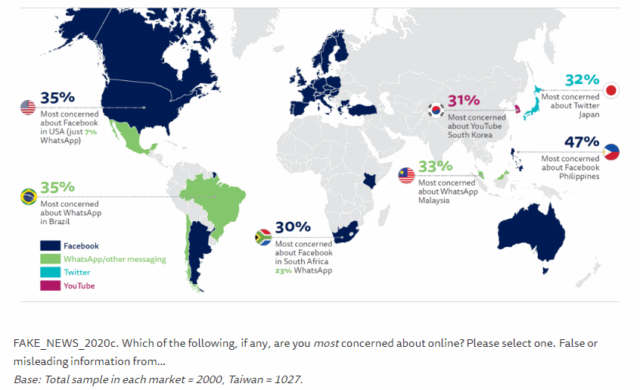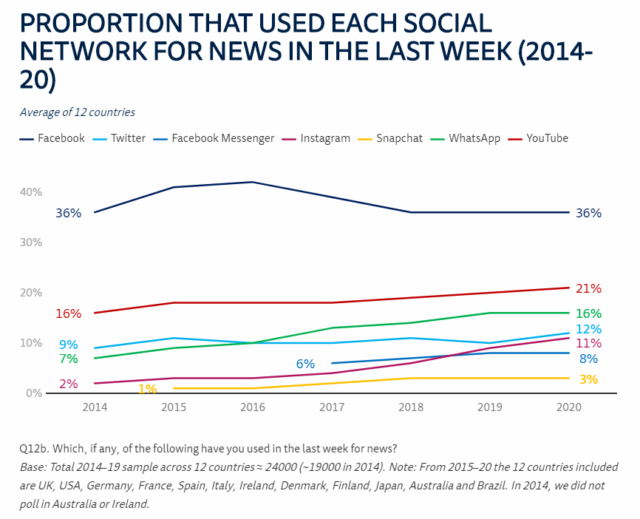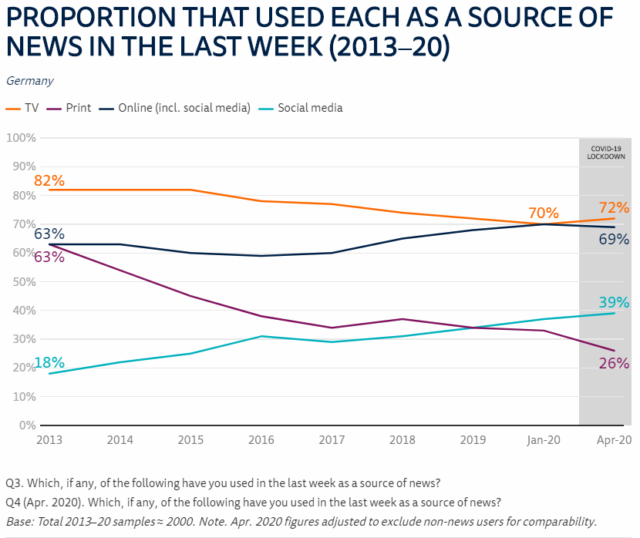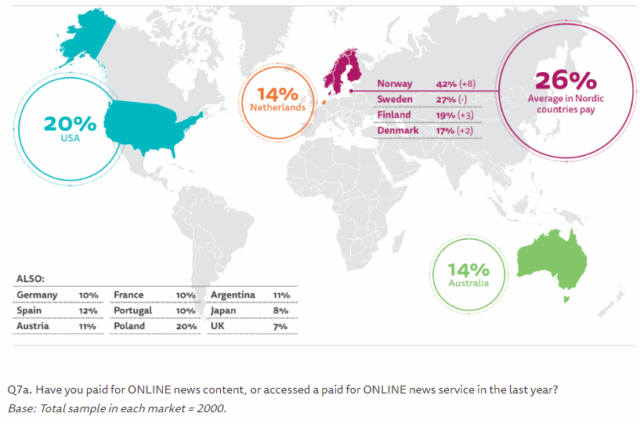
At first, it may feel strange that photo sharing service Instagram and messaging service Whatsapp are developing into news channels. That’s what Reuters Institute Digital News Report 2020, a survey that examines how digital media is changing the way we receive news, is indicating. The interesting thing is that people don’t trust social media as a news source, but still follow news on their favorite social channels.
Remember how Twitter started? It was meant for friends and groups of people to keep in touch. In the early stages, messages were about sandwiches, weekend plans, and tv shows. At some stage, marketers started pushing product messages, journalists began asking for tips and sources of information, and Twitter gradually developed into a key news channel for many people.
So, it is quite possible that Instagram and Whatsapp gradually become news distributors. The irony is that people say they don’t trust information they get via social media.
To put the rise of Facebook, YouTube, Twitter, Whatsapp and Instagram as news distributors into perspective, let’s take a look at the traditional news media.
Television and digital media have taken over news distribution almost completely. 72% of people have accessed news online, and 69% watched news on television in 2020. Print news sources, on the contrary, may disappear in a few years. Only 26% have read news from print media in 2020. It is a dramatic fall from 2013 when 63% of people still read print newspapers.
Newspapers have tried to move the subscription model from print media to online publication for years. The greatest success stories have been big global brands like The Wall Street Journal and Financial Times. Now, in Nordic markets, a considerable amount of people (average 26%) are paying for online news. This is significant. It maybe a sign that subscription model will succeed online as well. I still believe the challenge is that people don’t want to pay for news produced by one publisher only. If multiple news sources that are independent from one another were bundled in a subscription, it would be more attractive product, and compatible with other online media.
You can subscribe to an ebook service, like Scribd or 24symbols, and read books from all publishers. You can subscribe to a movie service like Netflix, and view movies produced by all studios. News publishers should follow the same model.
Via BBC, an article analyses the trust problem people have in news sources.



